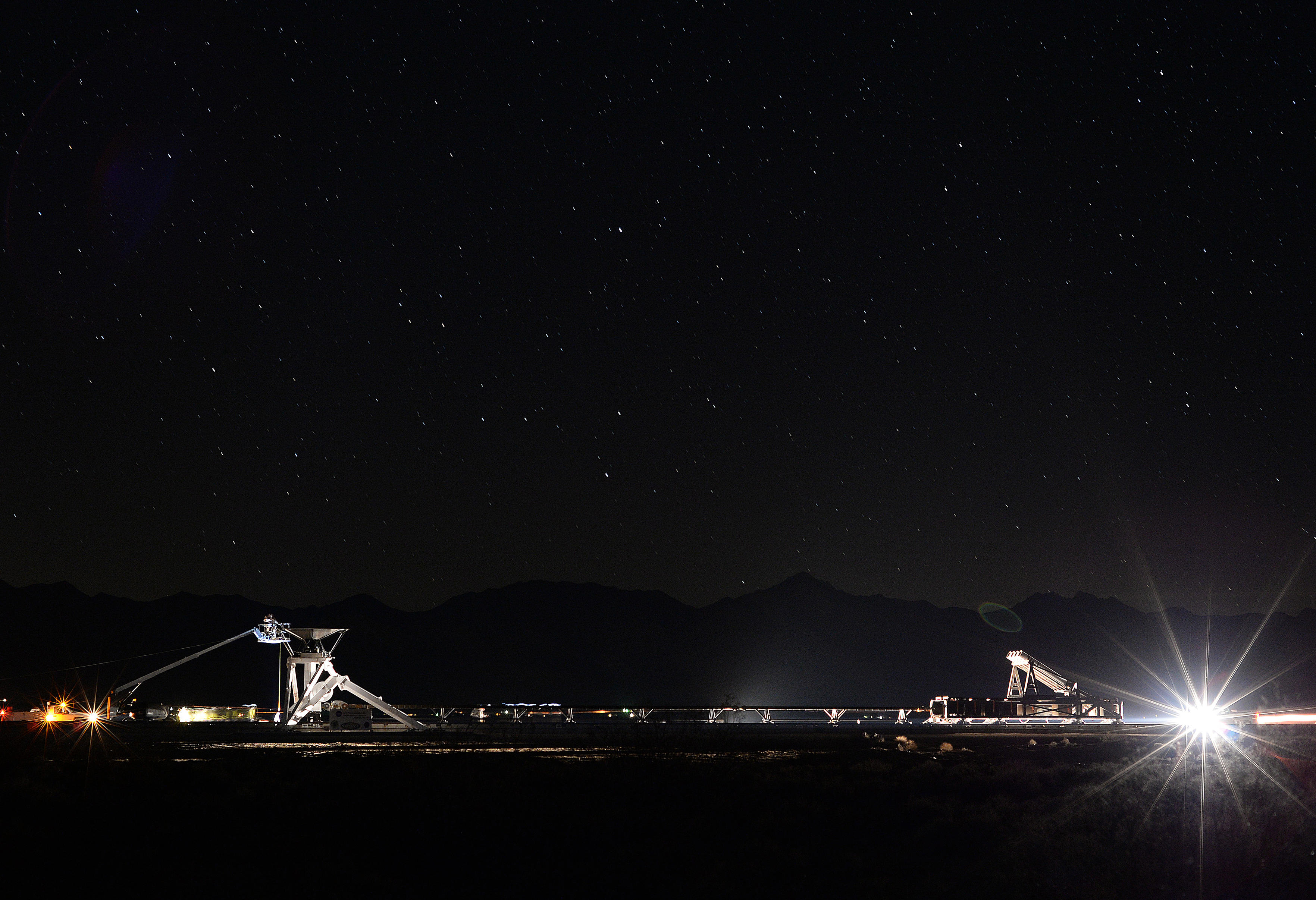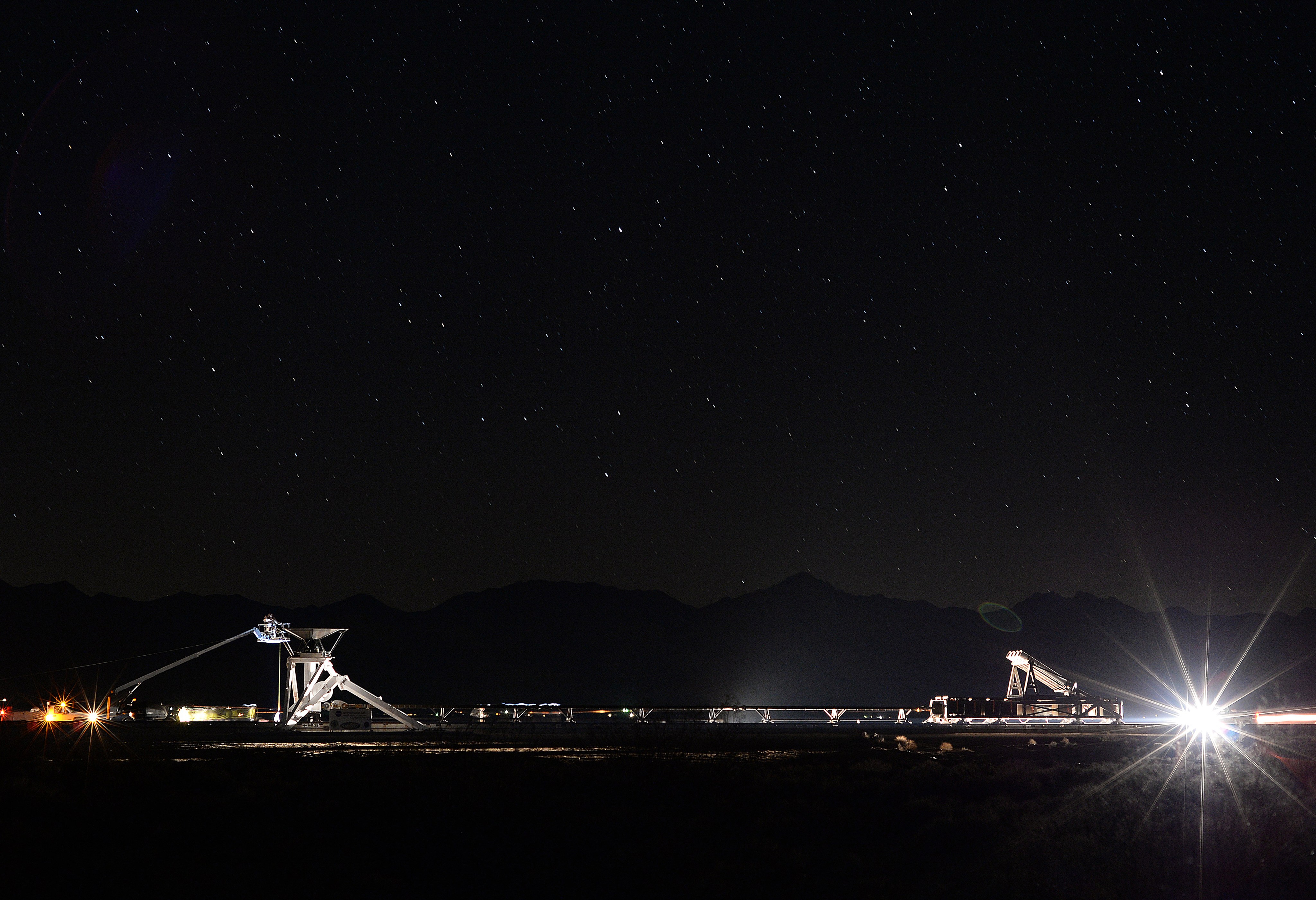Waiting For A Go

| Credit | NASA/JPL-Caltech |
|---|---|
| Language |
|
The tools of the rocket sled trade can be seen in this nighttime shot from the Supersonic Naval Ordnance Research Track (SNORT) at the Naval Air Weapons Station China Lake in California. The image was taken in the night of October 11, 2013, during preparations for a design verification test for NASA?s Low-Density Supersonic Decelerator project. In the image, the SNORT?s funnel and pulley can be seen illuminated on the left. The SNORT?s rocket sled is illuminated on the right.
LDSD tests inflatable and parachute decelerators to slow spacecraft prior to landing and allow NASA to increase landed payload masses, improve landing accuracy and increase the altitude of safe landing-sites. These new devices represent the first steps on the technology pathway to land humans, habitats and return rockets safely on Mars or other destinations.
NASA's Space Technology Mission Directorate funds the LDSD mission, a cooperative effort led by NASA's Jet Propulsion Laboratory in Pasadena, California. NASA's Technology Demonstration Mission program manages LDSD at NASA's Marshall Space Flight Center in Huntsville, Alabama. NASA's Wallops Flight Facility in Wallops Island, Virginia, coordinated support with the Pacific Missile Range Facility and provided the balloon systems for the LDSD test.
For more information about the LDSD space technology demonstration mission: http://go.usa.gov/kzZQ
For more information about the Space Technology Mission Directorate, visit: http://www.nasa.gov/spacetech

